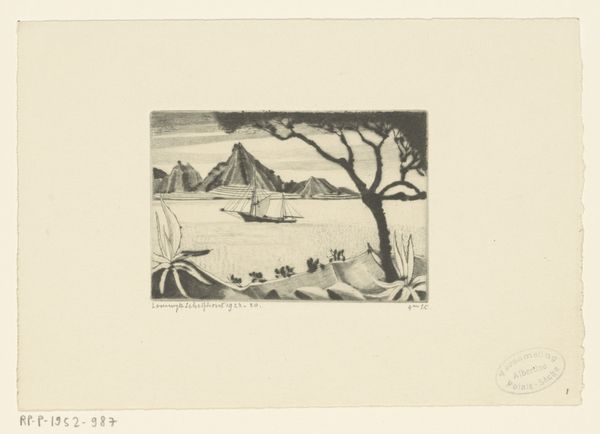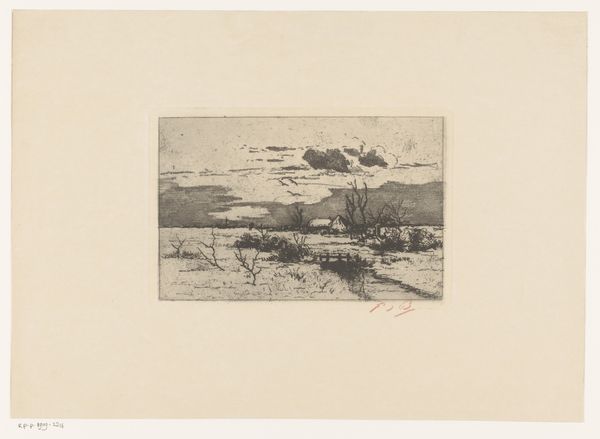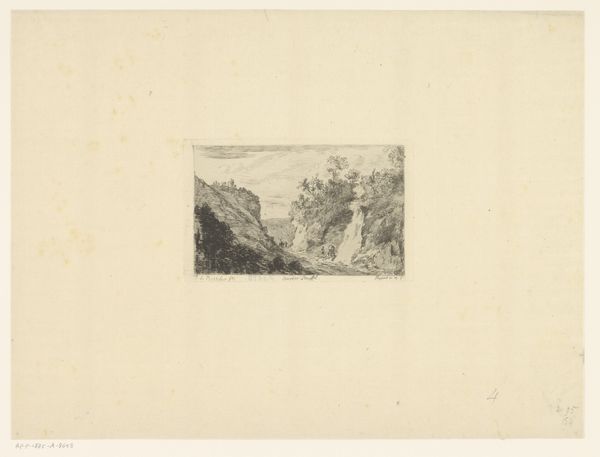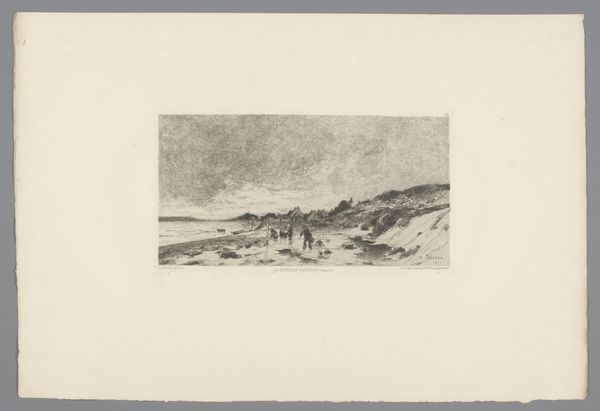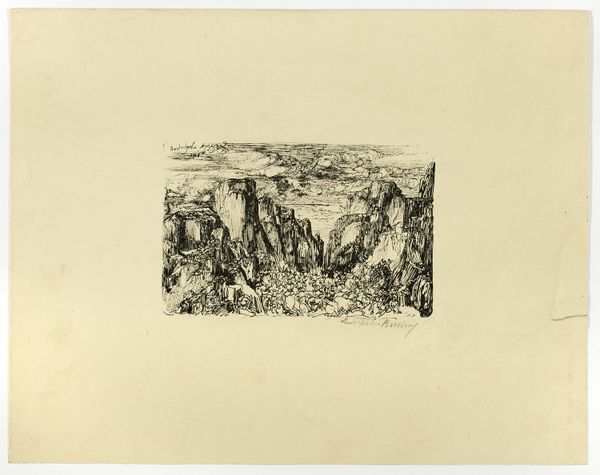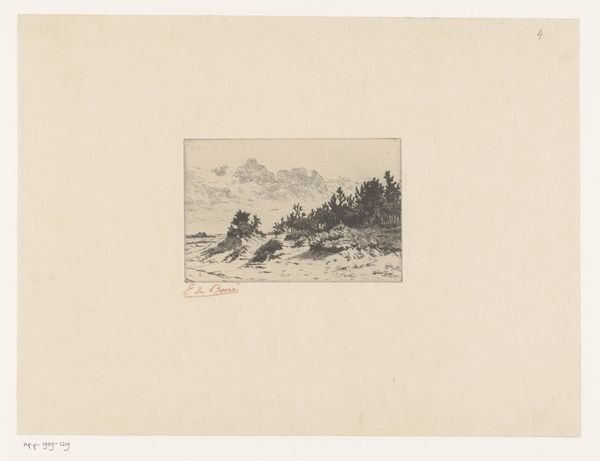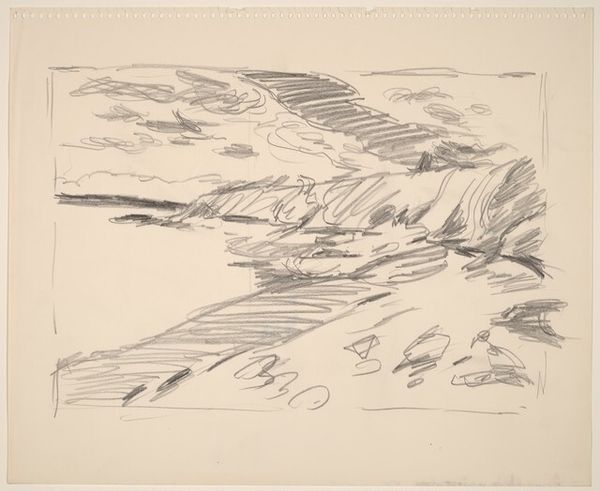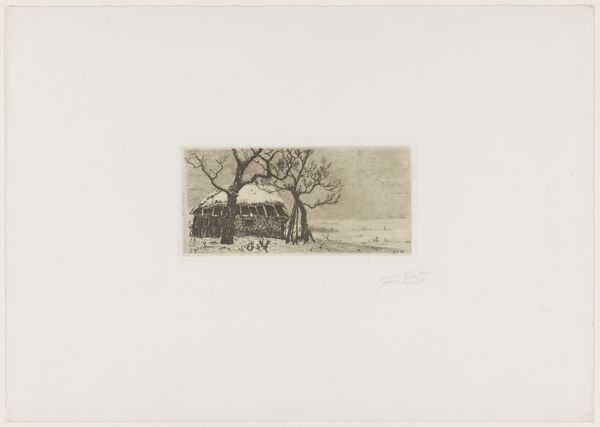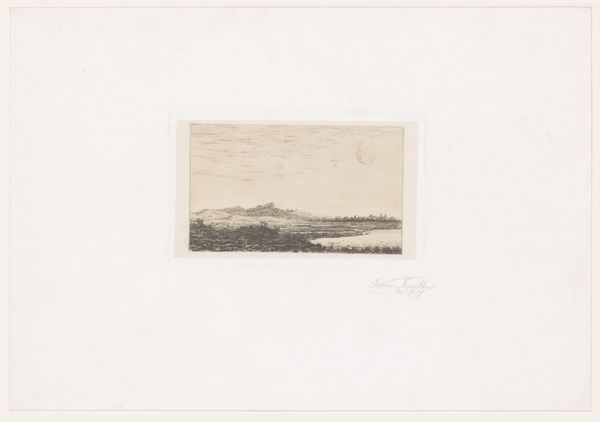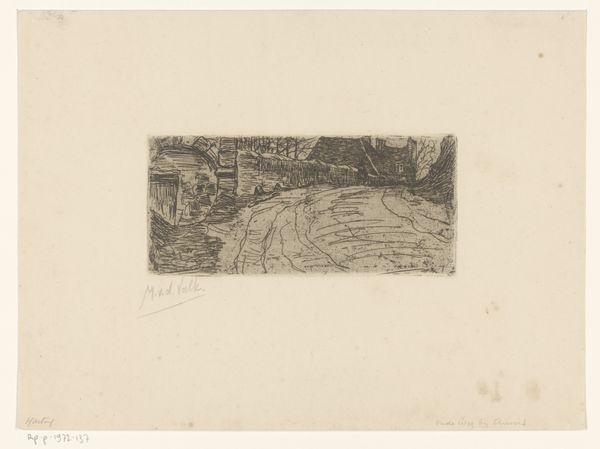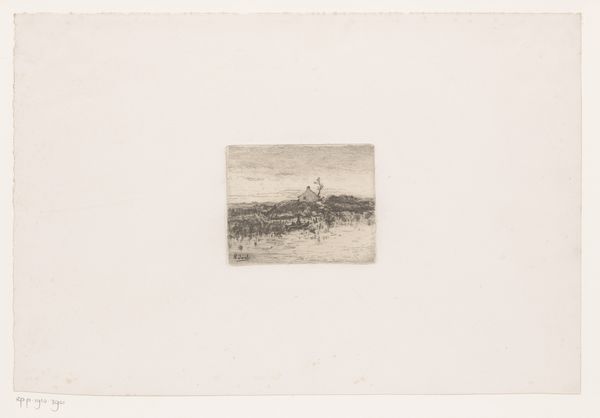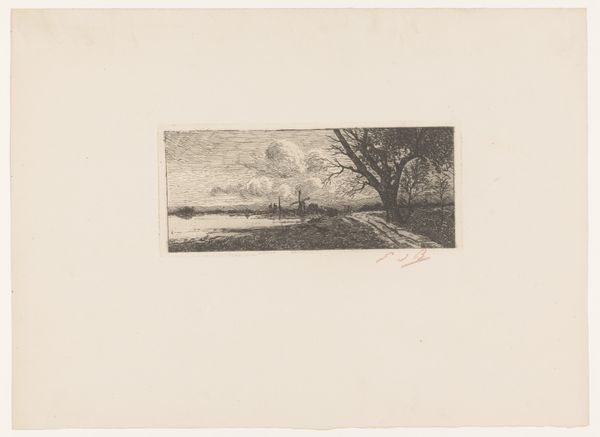
graphic-art, print, etching, paper, ink
#
graphic-art
#
ink paper printed
# print
#
etching
#
pencil sketch
#
old engraving style
#
landscape
#
paper
#
ink
#
mountain
#
cityscape
Dimensions: height 91 mm, width 217 mm
Copyright: Rijks Museum: Open Domain
Editor: Here we have Lodewijk Schelfhout's "Ajaccio" from 1921, rendered in ink on paper using the etching technique. The monochromatic palette gives the scene a nostalgic feel, and the composition almost feels like looking at a faded memory. What's your take on this particular cityscape? Curator: You know, it strikes me as a place both familiar and distant. Schelfhout captures the essence of Ajaccio – that Corsican air – yet filters it through his own lens. The way he uses stark contrasts, the solid blacks against the paper's pale glow, it's like a dream half-remembered. I wonder, does the starkness evoke a certain longing or melancholy for you, too? Or does it convey a different sentiment altogether? Editor: I can definitely sense that longing, maybe a bit of solitude as well. The limited color palette really emphasizes that, right? Curator: Precisely! And look at those palm trees, rendered almost like dark sentinels. They frame the scene, drawing our eye towards the city nestled against the mountains. It makes me think about how we always carry our personal landscapes within us, memories shaping how we perceive the world, no matter where we physically stand. Does it conjure a personal memory for you, perhaps a journey taken or a place dreamed of? Editor: That's beautiful! It does make me think of places I’ve only ever seen in photographs, a bit romantic and faraway. I never thought about how the artist’s personal memories could influence my own experience. Curator: Art, at its core, is a bridge. We bring our own experiences, and the artist invites us into theirs. Perhaps Schelfhout hoped someone, someday, would find a piece of themselves reflected in his Ajaccio. It seems to have worked, wouldn’t you say? Editor: I completely agree. It's definitely given me a new way to appreciate the layers within this piece.
Comments
No comments
Be the first to comment and join the conversation on the ultimate creative platform.
